What types are there?
Kitchen hoods can be categorized according to different parameters.
Air recycling:
- Flowing. It connects directly to the ventilation and discharges air into a special channel. Some models are also able to suck in fresh air, launching it into the room. The disadvantage of such a hood is the presence of a pipe that will have to be hidden or masked.
- Circulating. It sucks in polluted air, cleans it with charcoal filters, and releases it back into the kitchen. In comparison with the flowing one, it is less effective and more demanding. The filters will have to be constantly changed and cleaned. However, it does not require a connection to the ventilation shaft, so there is no problem with the air duct.
Control method:
- Mechanical. The simplest range hood with a conventional keypad. Found mainly in the budget segment.
- Slider. Instead of buttons, there are sliders. They regulate the power, backlight, air flow direction. Reliable, found in a variety of designs.
- Sensory. The modern method of control is often complemented by a remote control panel, therefore it is considered the most convenient. Another plus is the possibility of easy cleaning due to the smoothness of the surface. They are more expensive than mechanics and sliders.
Material:
- Plastic. Cheap, easy to clean, but not durable.
- Enameled. They are more expensive than plastic, but they live longer. They look aesthetically pleasing, easy to care for.
- Steel. Stainless steel is lightweight, durable. It has one drawback - prints are constantly left on the surface.
- Glass. Stylish, easy to clean, durable. Give preference to white tempered glass if you do not want to constantly wash dark matte glass from stains and smudges.
Classification by design
Kitchen hoods are structurally divided into 3 types:
- Traditional. A classic kitchen hood is cheaper and simpler than the others. These are standard models hanging on the wall above the hob. There are both circulating and flowing ones. Minus - it requires a separate place, to hide it will have to build a box.
- Embedded. The most inconspicuous option, mounted in the headset hinged module above the stove. Most often, such hoods are telescopic - that is, they have a retractable panel, due to which the coverage area increases. Hoods are built not only above the stove, but also in the countertop behind the stove - during cooking, it slides out and remains open, and when not needed, it simply hides in the table.
Pictured is a built-in system
- Dome. It is considered the most effective among the rest, because it captures the maximum amount of odors. In some cases, it has not only the upper part, but also side shutters that prevent dirt from escaping.
The photo shows a white modern hood in the kitchen with brown facades
Varieties in shape
There are 6 main options for kitchen hoods:
- Flat. It is somewhat similar to an embedded one, but it is an independent element. Thanks to the flattened geometry, it will save space in the kitchen.
- Dome.We have already mentioned it in the last section. The dome shape literally hangs over the cooking area and absorbs all dirt.
- T-shaped. With a panel between the pipe and the exhaust system itself - it is convenient to store spices, cooking accessories, decor on it.
In the photo, a variant of a stylish inconspicuous model
- Inclined. Perhaps, it has the most eye-catching design - it is located at an angle relative to the hob. The main advantage of the solution is the saving of space and the convenience of approaching the stove.
- Ostrovnaya. Most often it looks like a pipe hanging from the ceiling in the form of a cylinder or parallelepiped. Installs wherever you want.
- Corner. Ideal if the hob is located in a corner. Most often, the surface can be used for storage.
Accommodation recommendations
To increase the efficiency of the hood, you must firstly choose it correctly, and secondly, install it correctly. Regardless of the shape, choose according to the width of the plate or more. This is the guarantee of clean air. The depth, on the contrary, should be a little less - otherwise you will constantly bump your head against it.
Many believe that the hood should be located directly above the apron - that is, at a height of 60 cm.But this belief is not true. The height of the location varies from the type of plate:
- 65-75 over electric;
- 75-85 over gas.
An exception is the oblique shape. It is placed 45-55 cm above the electric stove and 55-65 cm above the gas one.
Decreasing the distance helps to clean the air better, but due to the too small space there is a high risk of damage to the system due to overheating.
In the photo, a repetition of clear geometric lines in equipment and furniture
How to hide a cooker hood?
If you purchased an unsuitable model or changed the interior after installing the hood, you can hide it in the box. The advantage of the method is that there will be space above it for storing kitchen utensils.
An unusual but effective option is a mirror film. Thanks to the visual illusion, everything unnecessary literally dissolves into space.
In the photo, hiding the hood in the box
However, most often it is required to close not the exhaust system itself, but the pipe from it. There are 4 main ways to do this:
- Hide in the ceiling. Stretch or hinged ceiling design allows you to completely hide unsightly communications. But it will have to be placed at a lower level, because standard pipes have a diameter of 10-15 cm.
- Sew up into a box. Decorative boxes are made of chipboard, MDF, wood, metal, drywall. This is a job with a low level of complexity, so you can do it yourself. The disadvantage of this method is the lack of additional functionality.
- Remove the cabinet in the top row. An additional second row of wall cabinets allows not only to increase the storage area, but also to hide the corrugation going to the ventilation.
- Decorate in the color of the walls. The method is suitable exclusively for monochromatic finishes. When you paint the round pipe to match the wall behind it, it will simply dissolve.
If you are not embarrassed by the fact that there is a pipe in the interior and it suits the style of the kitchen (loft, modern, hi-tech), leave it as it is. Or focus on it by painting it in any bright color.
In the photo, the use of an illusion with a mirror film
Interior design ideas
The hood in the interior of the kitchen will be a harmonious addition to the design, if you choose the right model.
In a country or Provence style kitchen, a large hood-dome with a carved rim will become the central element. To make it even more visible, choose a contrasting color option.
The domed hood with gold trim blends harmoniously with the classic interior. An alternative idea for the classic style is any hood hidden behind wooden sides under the facades.
In the photo there is a spacious kitchen with steel appliances
When decorating a modern kitchen in the Art Nouveau style, pay attention to sloped glass options, or modern island models.
The high-tech direction is also suitable for a designer inclined tempered glass hood or a steel domed hood.
The photo shows the interior in the style of minimalism
Depending on the environment, steel or black hoods are purchased in the loft. Dome, cylindrical, rectangular are suitable in shape.
In the photo, a variant of a non-standard kitchen design in the house
Examples for small kitchens
The main task in a compact kitchen is to save space. The hood must also correspond to this parameter. The most concise models are built-in or flat. Moreover, if they are circulating, you will not have to place a bulky pipe.
With all their advantages, built-in or under-cabinet models are not the most economical. There are more subtle but equally effective technologies.
Ceiling recessed solves the problem of saving space in cabinets. If you place the hood inside a tension or hinged frame, it can go unnoticed at all - only a decorative grille will be visible from the outside.
In a private house, it is possible to place ventilation equipment in the wall. Remaining almost invisible, it does an excellent job of its functions.
When it is too late to make changes to the project or finish, the installation of the model built into the countertop helps out. The hood is located in the immediate vicinity of the cooking area and efficiently draws in polluted air. And it's much easier to get close to cleaning it from grease or replacing filters.
In the photo, the placement of equipment in a small kitchen
Photo gallery
When choosing an exhaust system for your apartment, pay attention not only to its shape and size, but also to the noise level and performance.

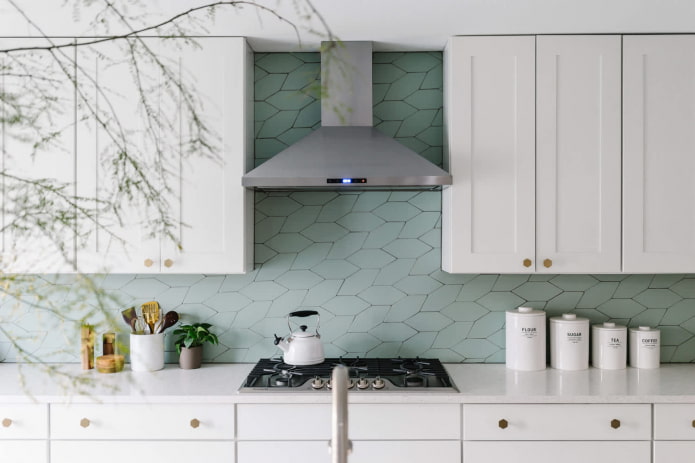
 10 practical tips for arranging a small kitchen in the country
10 practical tips for arranging a small kitchen in the country
 12 simple ideas for a small garden that will make it visually spacious
12 simple ideas for a small garden that will make it visually spacious
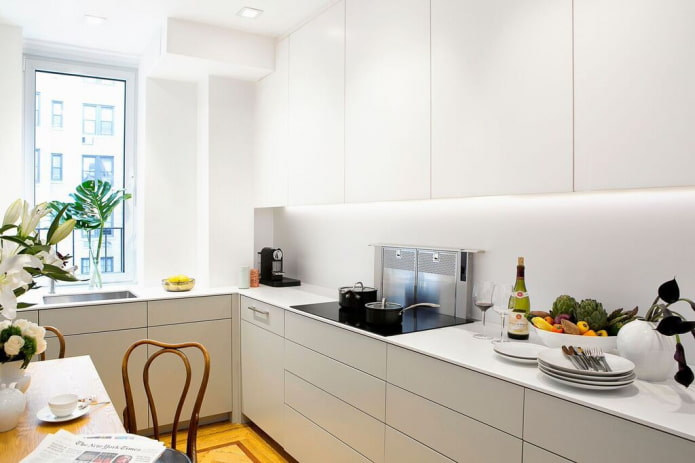
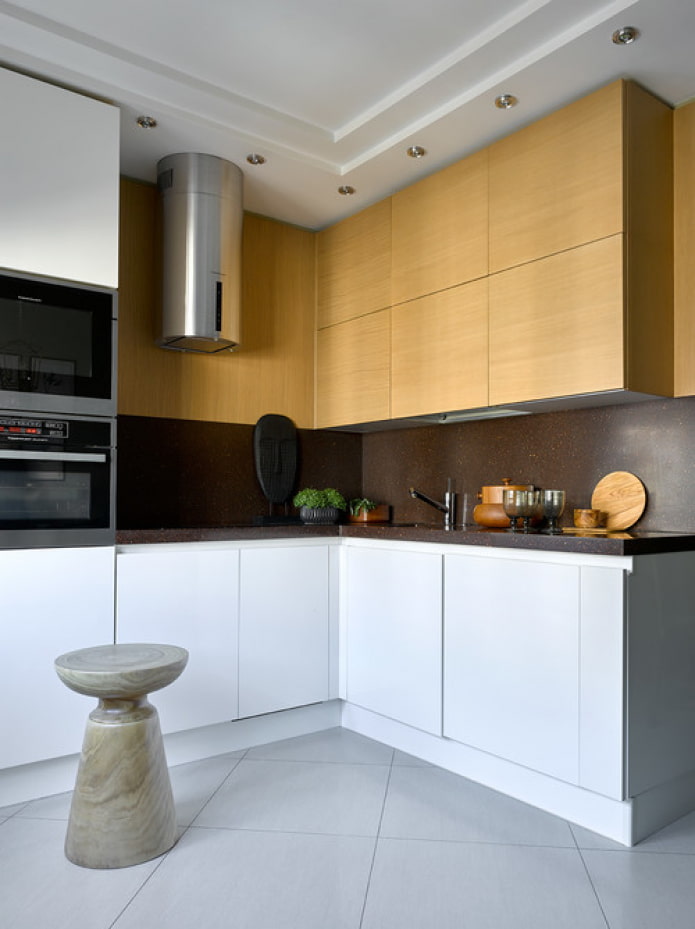
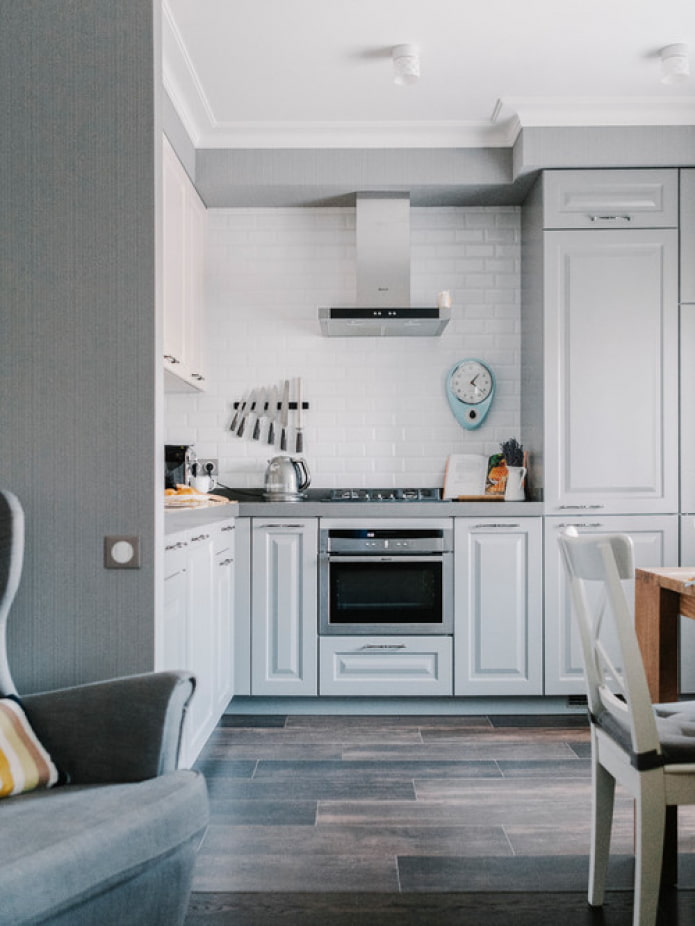
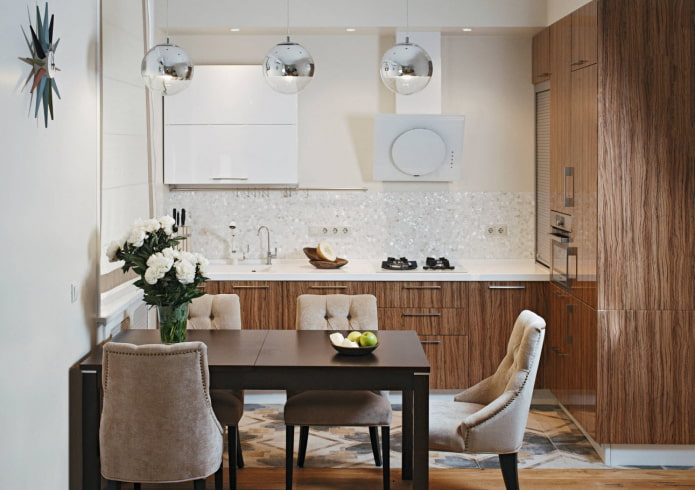
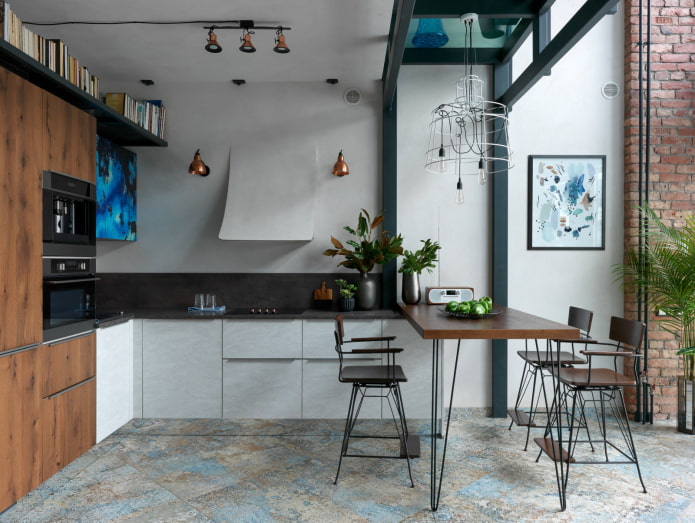
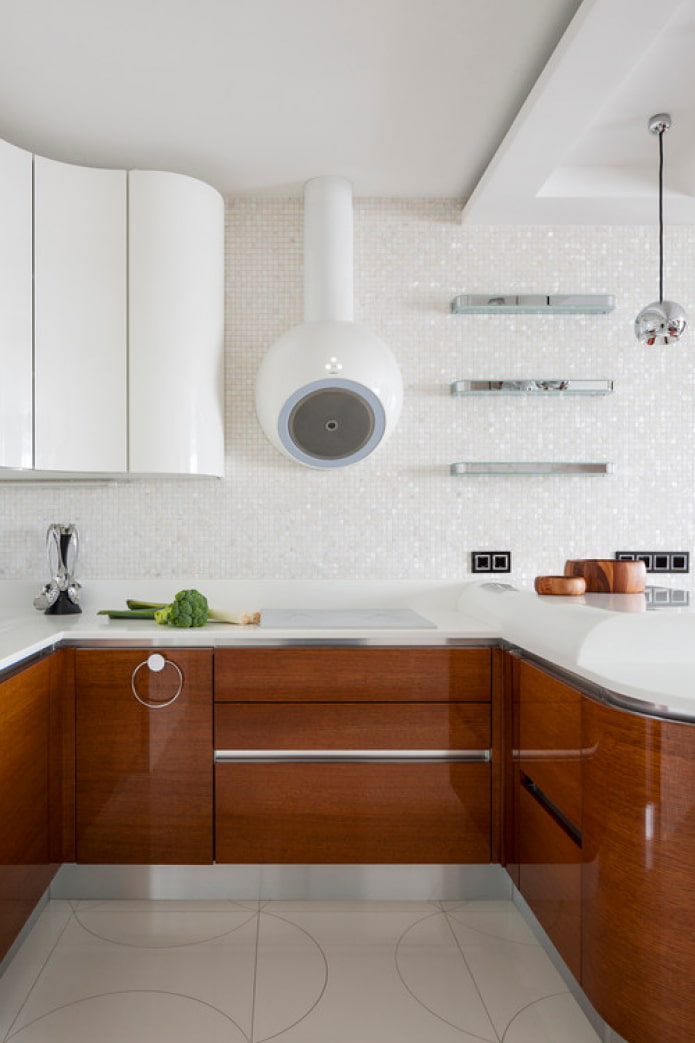
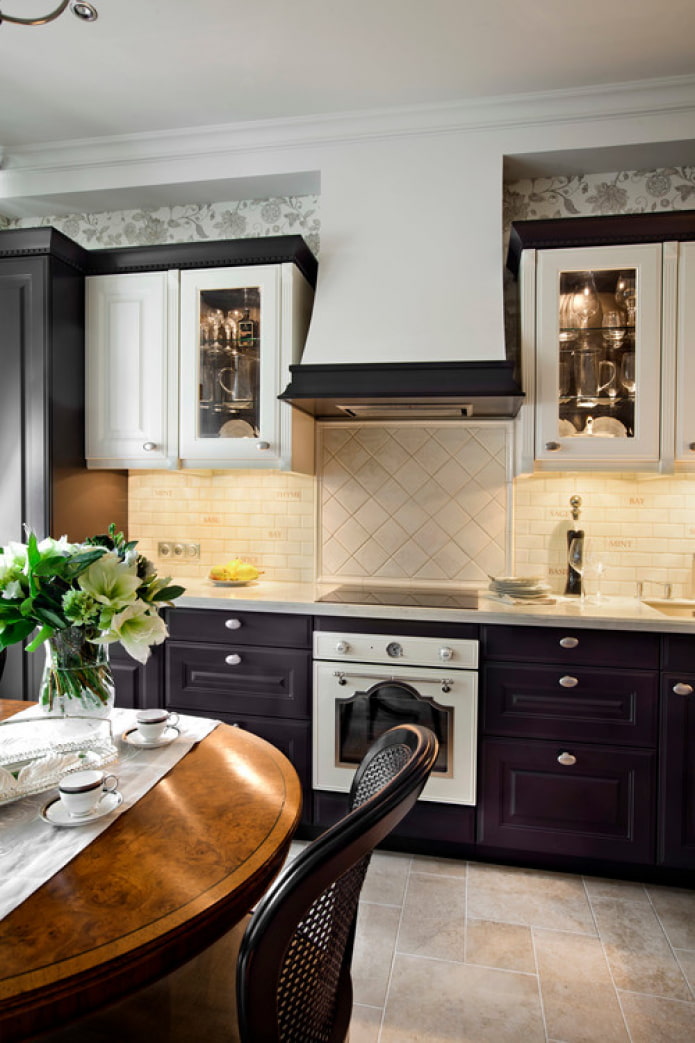
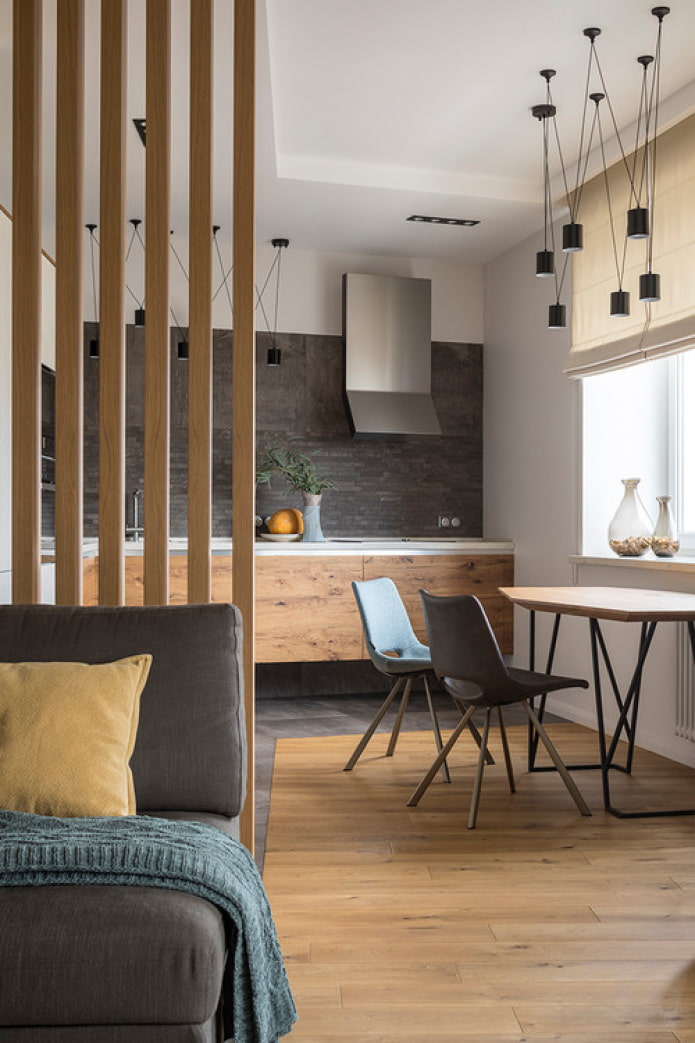
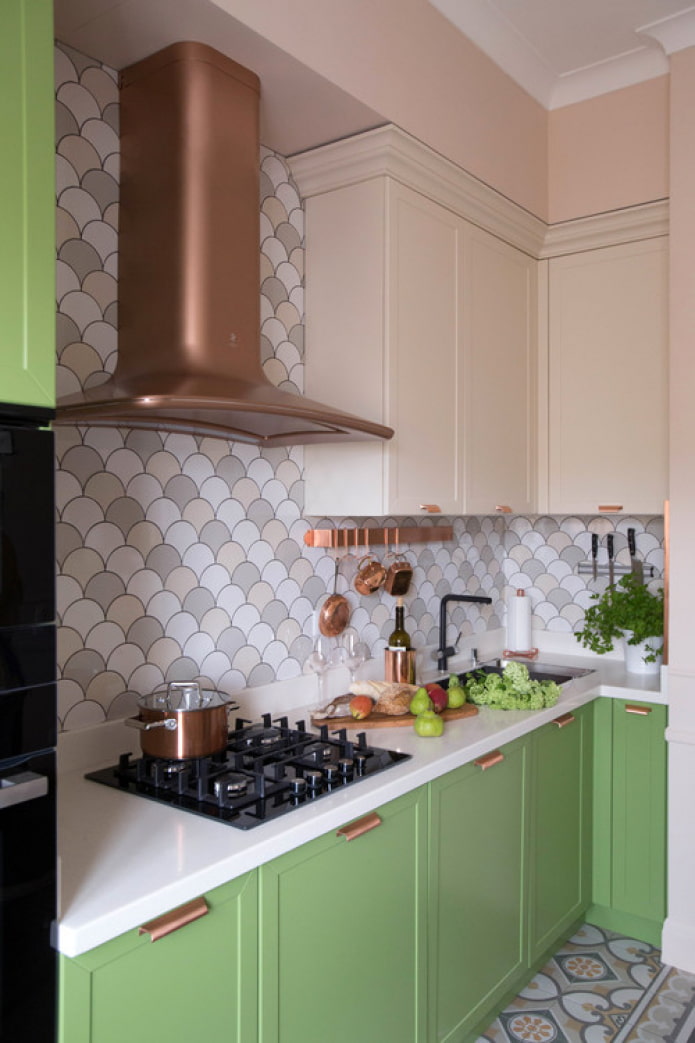
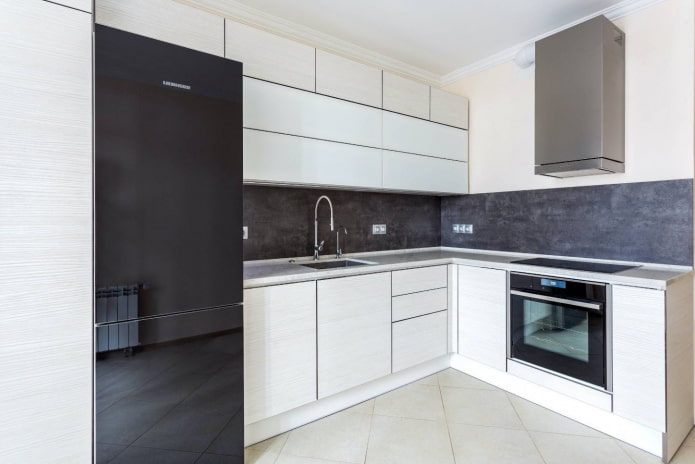
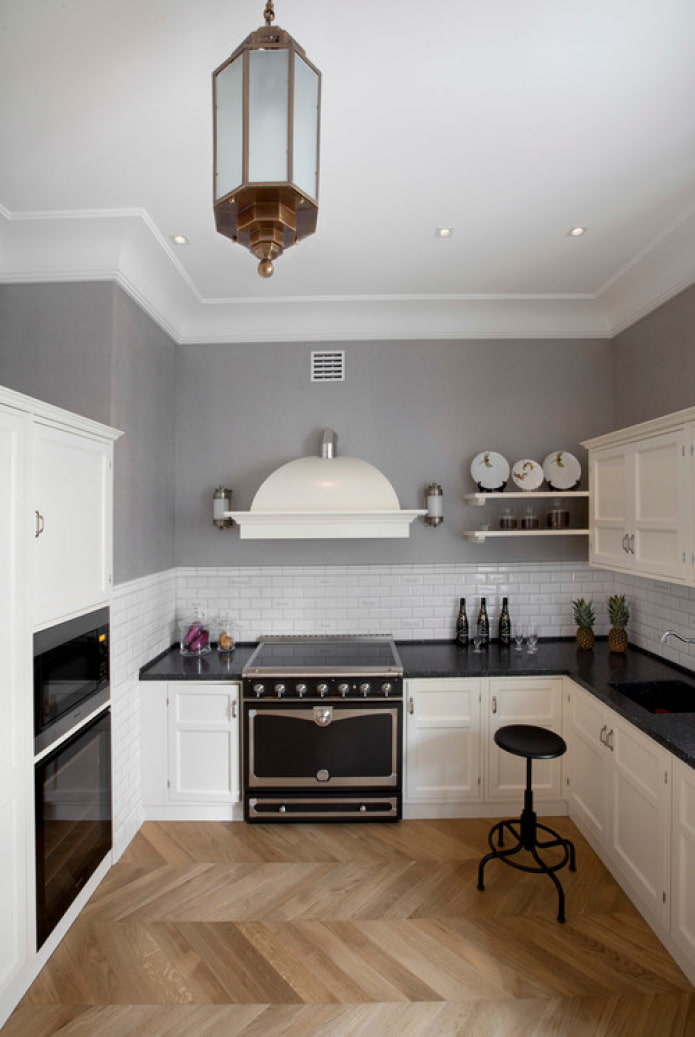
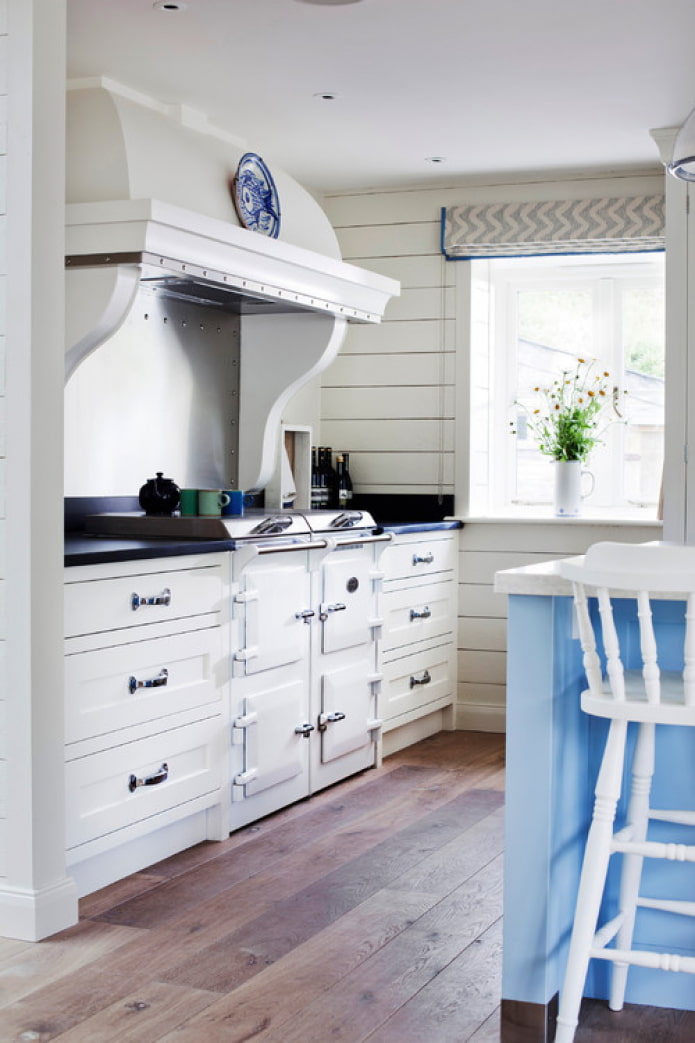
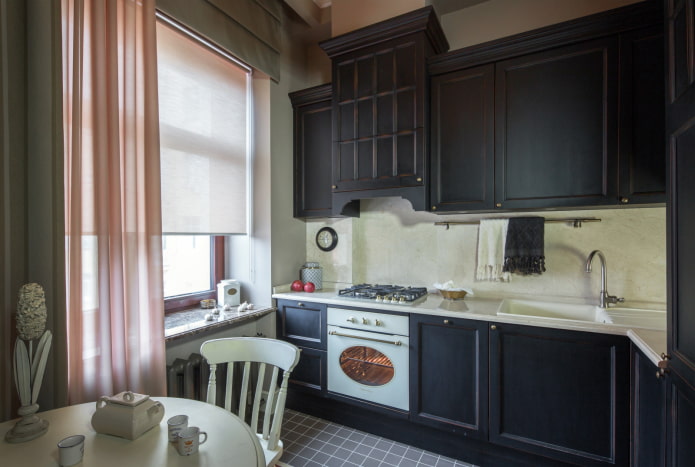
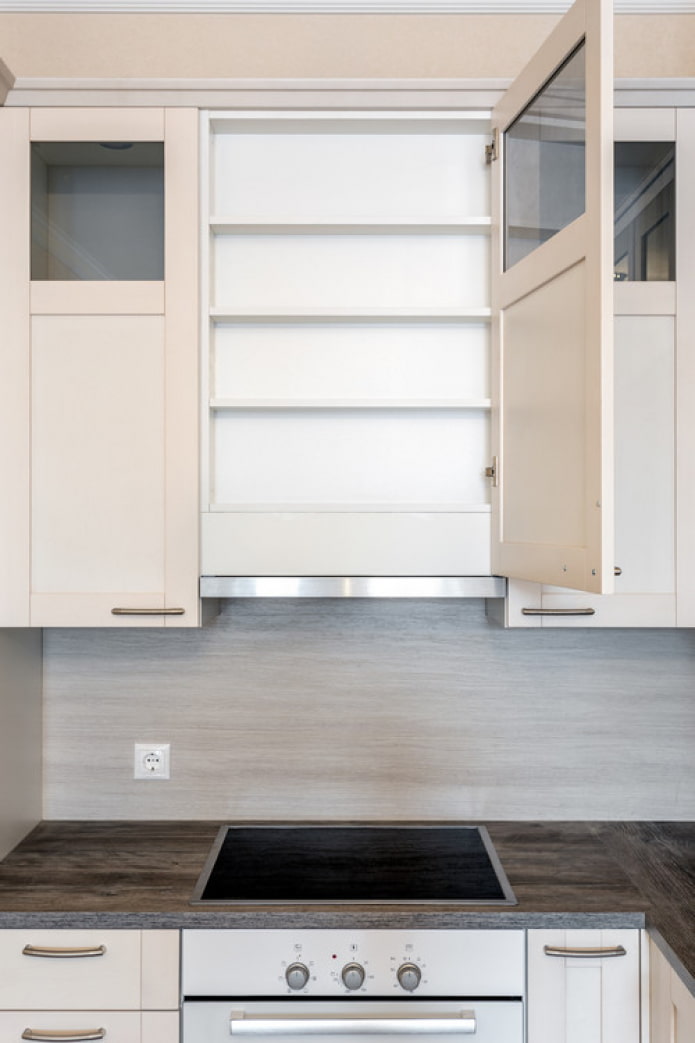
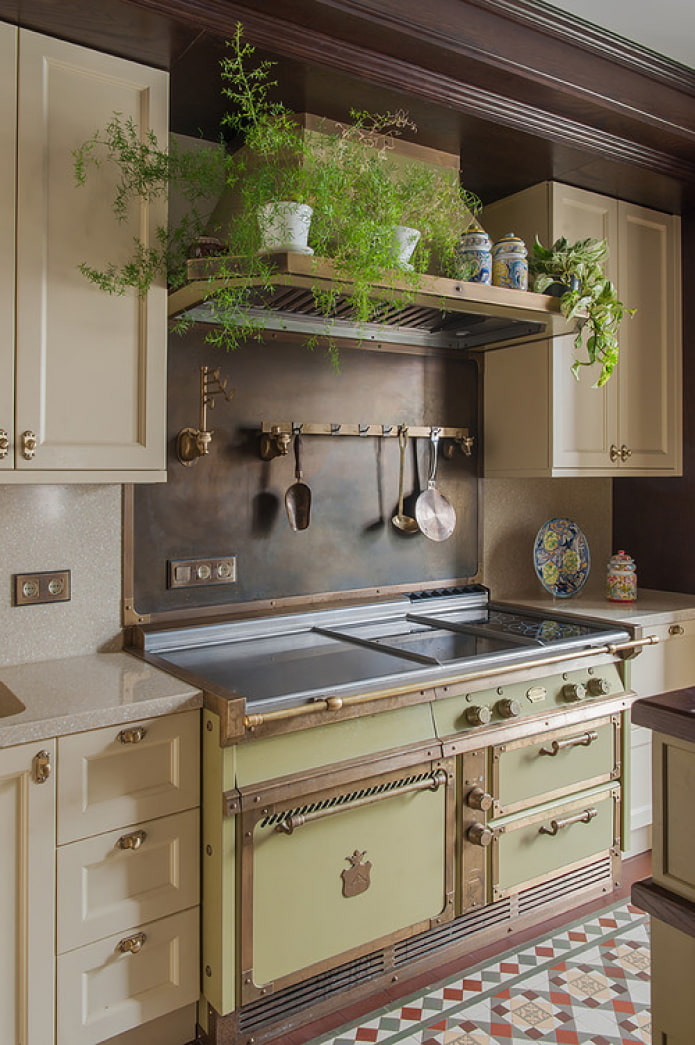
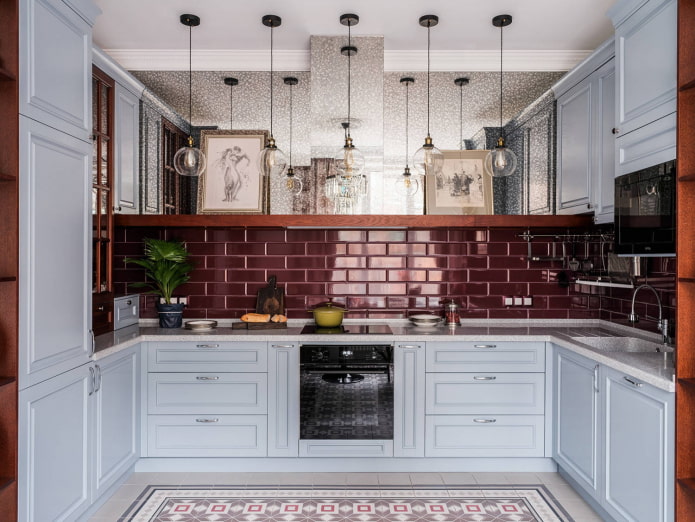
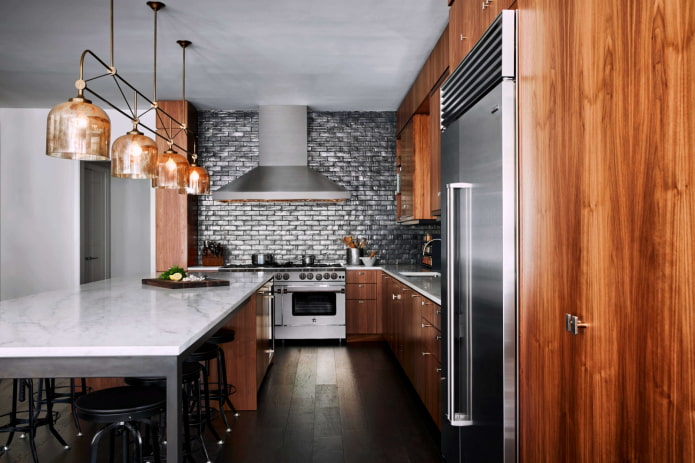
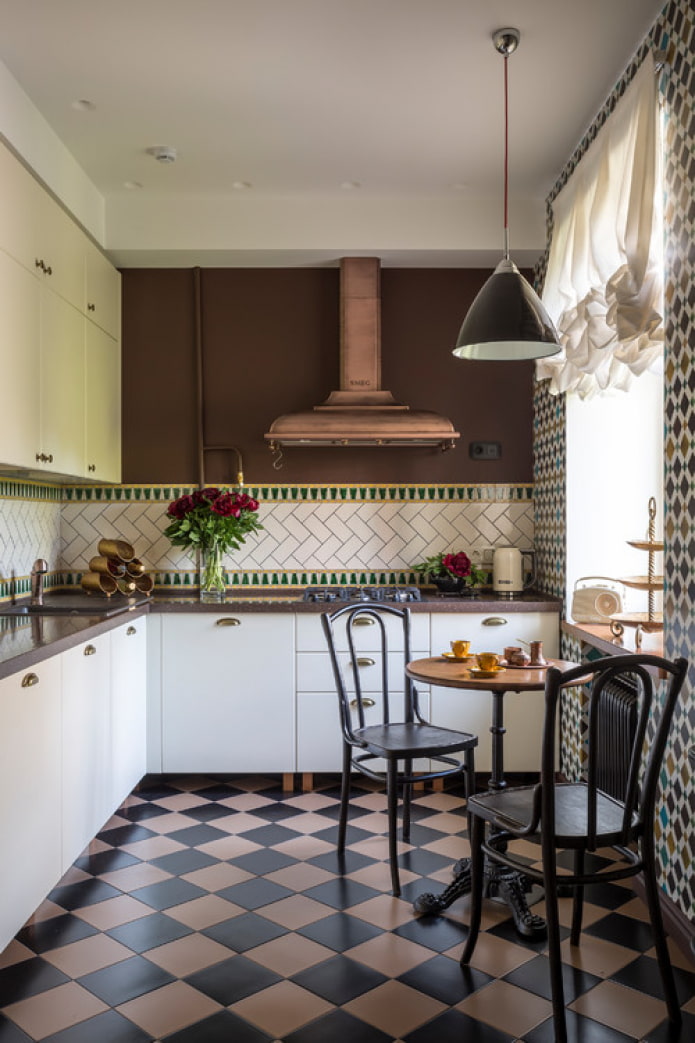
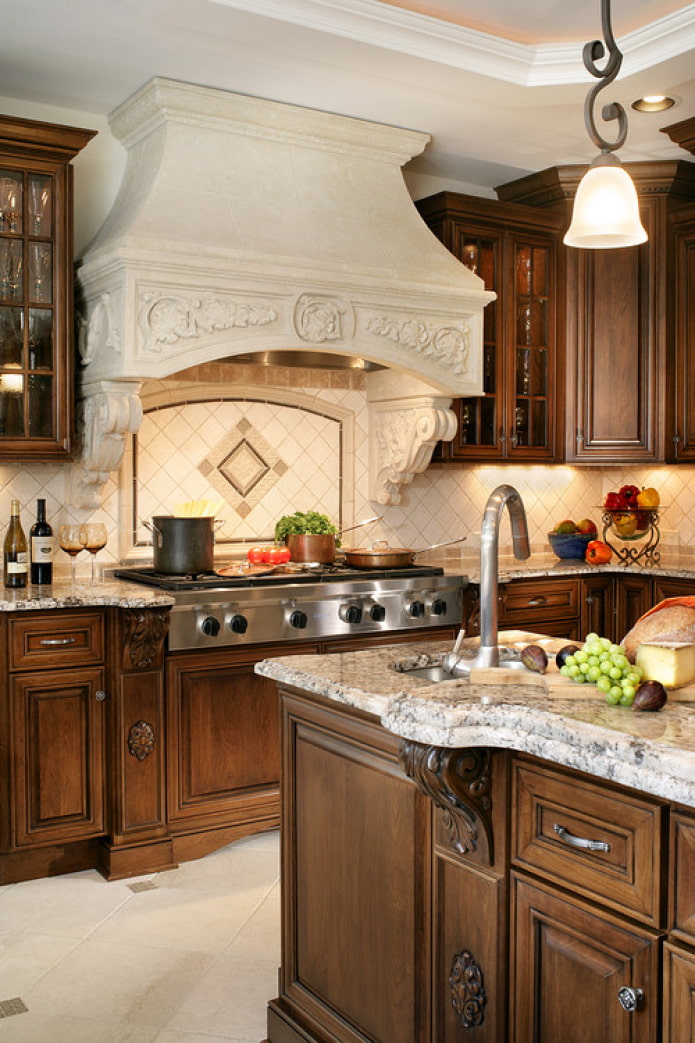

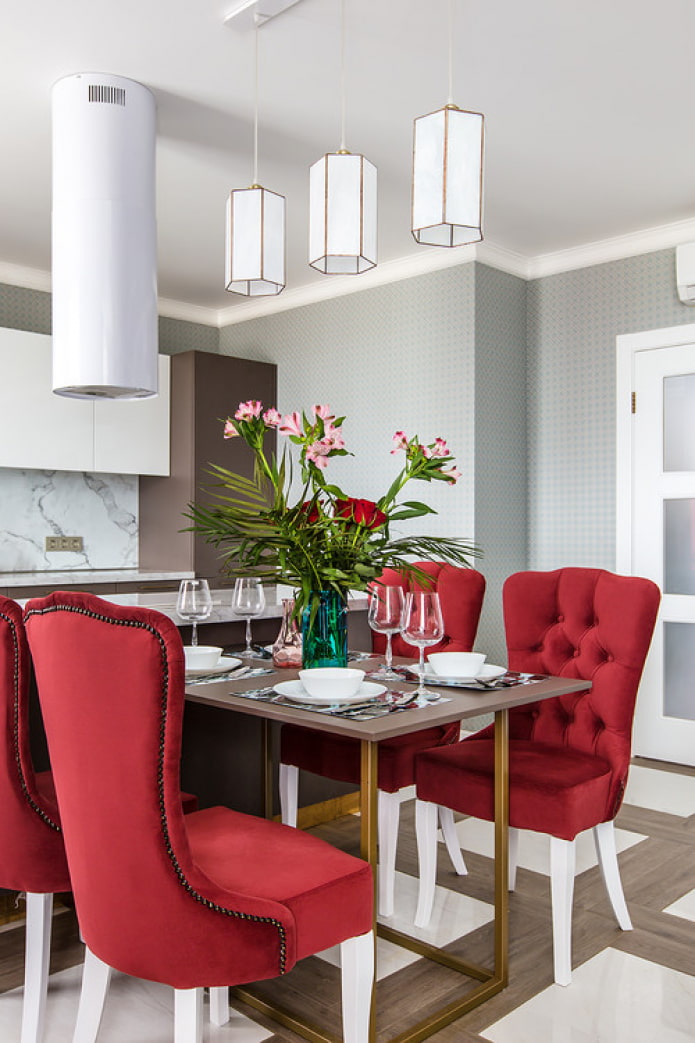
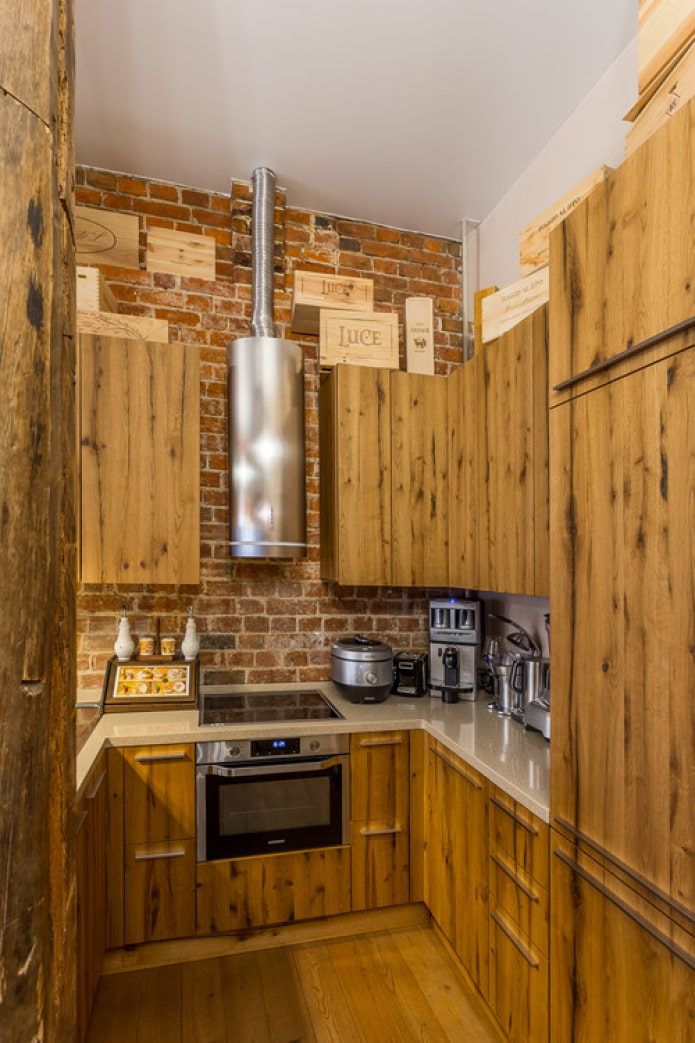
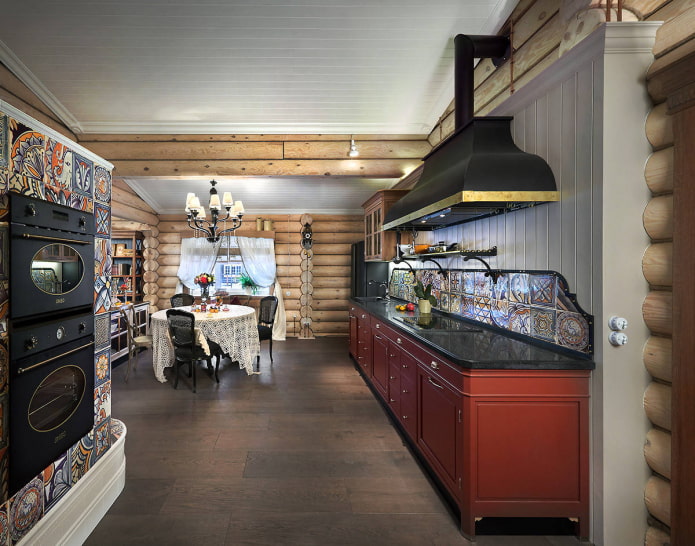

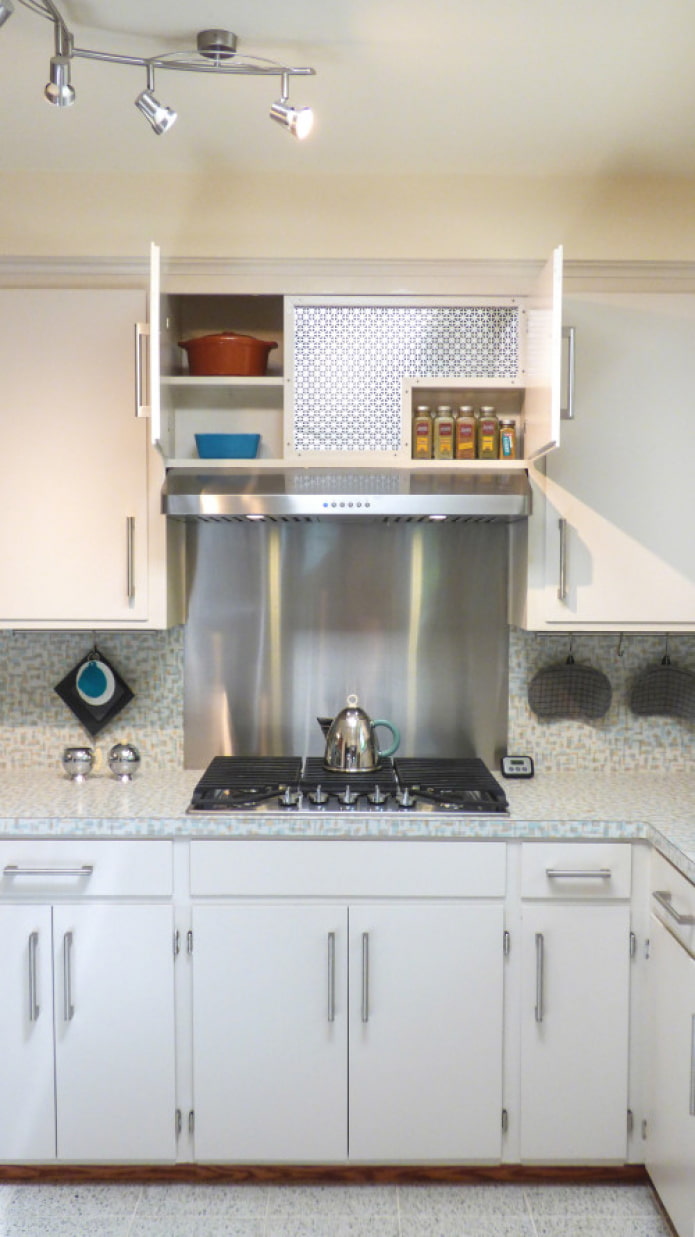

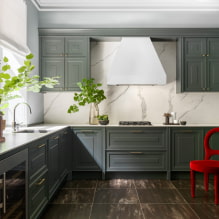

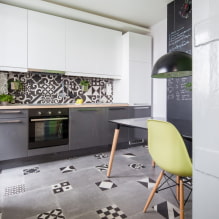

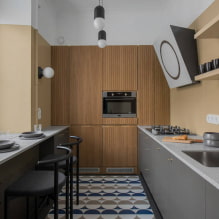
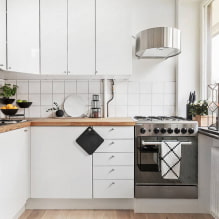

 How to choose the color of your kitchen sink?
How to choose the color of your kitchen sink? White kitchen set: features of choice, combination, 70 photos in the interior
White kitchen set: features of choice, combination, 70 photos in the interior Black set in the interior in the kitchen: design, choice of wallpaper, 90 photos
Black set in the interior in the kitchen: design, choice of wallpaper, 90 photos How to choose curtains for the kitchen and not regret it? - we understand all the nuances
How to choose curtains for the kitchen and not regret it? - we understand all the nuances Design of a white kitchen with a black countertop: 80 best ideas, photos in the interior
Design of a white kitchen with a black countertop: 80 best ideas, photos in the interior Kitchen design with green wallpaper: 55 modern photos in the interior
Kitchen design with green wallpaper: 55 modern photos in the interior